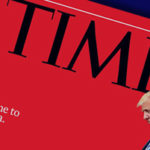 If you are not familiar with A List Apart, let me introduce you.
If you are not familiar with A List Apart, let me introduce you.
A List Apart started in the 90s as a mailing list for professionals in the new field of web development, but soon evolved to become a website and a publishing house. I like their stuff. Sometimes it’s practical, sometimes theoretical, but they always give equal weight to both content and clarity, form and function. Whether in blog-post or print, you’ll find that the articles speak to cutting-edge concerns while communicating with an authentic voice and personality.
Tapping into that authenticity is the key to making anything memorable, in any creative field. Web design is no different. While this is self-evident from a marketing point of view (i.e. staying true to your company, brand, or product is the best way to create and retain satisfied customers) a recent article by web developer Kevin Goldman takes the concept a step further. Extending this quest for authenticity to the stuff of his digital creation, he borrows a term most often applied to architecture: Material Honesty.
As he quotes:
To cover brick with plaster, and this plaster with fresco, is perfectly legitimate… But to cover brick with cement, and to divide this cement with joints that it may look like stone, is to tell a falsehood; and is just as contemptible a procedure as the other is noble. — John Ruskin, The Seven Lamps of Architecture, 1849
Web design began as an exercise in coding. As that code is typically expressed visually through your browser, it made sense that the web world would quickly merge with the discipline of graphic design. Soon websites began to incorporate not only a photo-rich interface, but also the tricks that graphic artists have employed since the Mac first made its way into the print shop.
 All well and good as long as we stuck to the same-sized desktops for all of our browsing. However, in this day and age of a thousand tablets, phones, and web-enabled devices, a return to a clean rendering of quality code is the only way to ensure usability and truly responsive design. Fancy graphics built for one screen might be an abismal disaster on another.
All well and good as long as we stuck to the same-sized desktops for all of our browsing. However, in this day and age of a thousand tablets, phones, and web-enabled devices, a return to a clean rendering of quality code is the only way to ensure usability and truly responsive design. Fancy graphics built for one screen might be an abismal disaster on another.
Practically speaking, this means that I’ve got to think about the end-user experience right from the first sketch. No longer does it make sense to mockup lovely layouts in Photoshop only to have them crumble on your Kindle. The demo needs to make its way to the browser as soon as possible, to be let loose and observed in its native environment.
Beyond that, I’m tickled that web designers take their field so seriously as to get philosophical about the process. This tells me that we’re growing up, adding to the conversation of the modern world as architects and engineers used to do.
As per the pictures in this post, I first came across the idea of “Material Honesty” in a failed first attempt to read Ayn Rand’s The Fountainhead. Her hero, the architect Howard Roark, was a fan. While I can’t vouch for every ideal that Ms. Rand embraced, this is a concept worth considering. Take a moment to read the article. His insistence on principle might seem a little self-indulgent, but ideas always have real-world consequences. Something to keep in mind as we sketch-up the next project.


